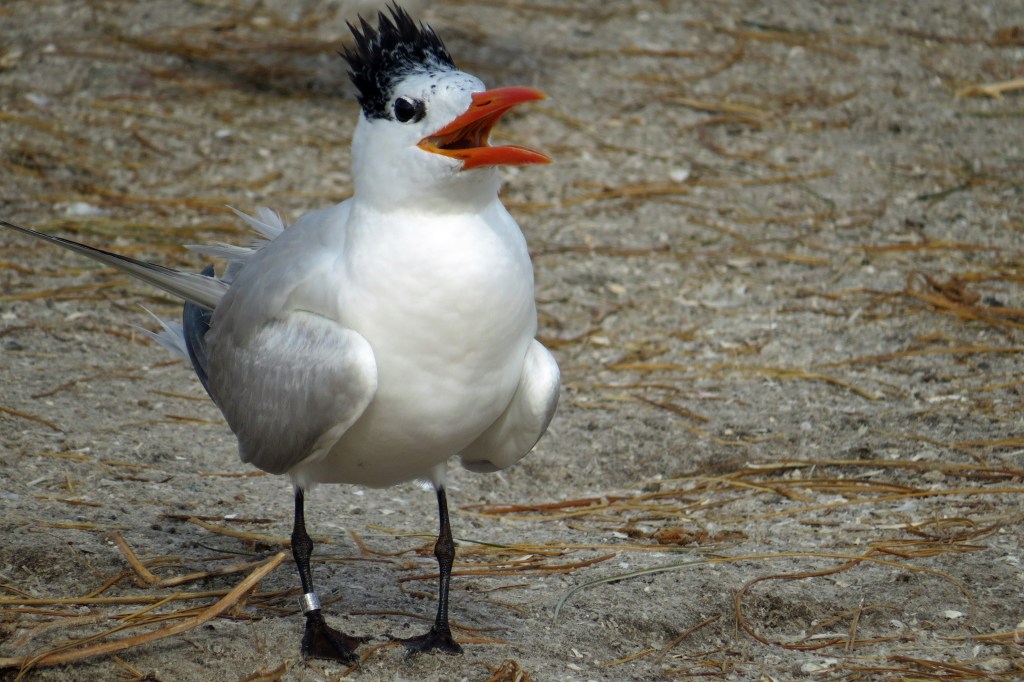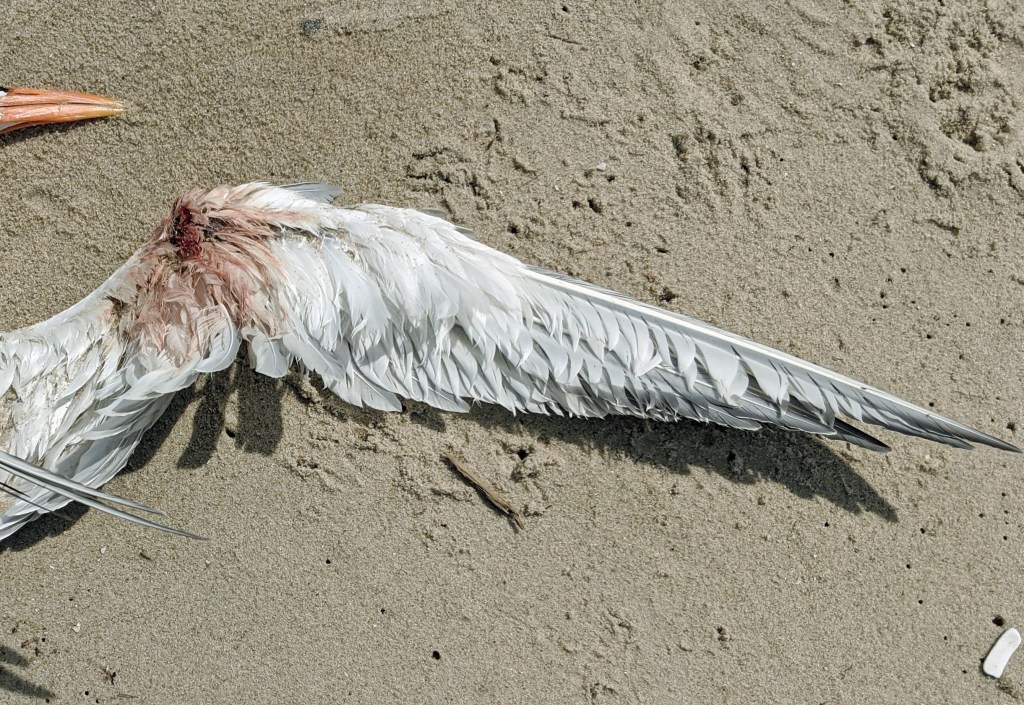
Reprinted from the Ocracoke Observer
Coming across a dead wild animal is not fun. But death is part of nature. In the case of birds, a small band on one of its legs can reveal a fascinating history as was the case recently.
Supporter Spotlight
Here is the story. On an early morning walk May 12 to Springer’s Point, I came across a dead royal tern on the small beach. A bit of blood was on the outstretched wing. It had a metallic band on one of its legs.
Bird banding is a method of tracking and identifying birds. It involves attaching a small, ring-like band of colored plastic or metal to a bird’s leg. Terns and pelicans are usually banded when they are young. Others, such as warblers, are caught in a mist net stretched between two poles.
Once the bird is in hand, the banding crew records information such as the species, sex, age and weight. The band has a unique number and the information is sent to the Bird Banding Laboratory, or BBL, in Patuxent, Maryland, part of the United States Geological Survey.
The BBL has a webpage to send the band code and the circumstances around finding it. When I attempted to send it, I got a red flag indicating my information may be incorrect and to double check. I did and finally it was accepted.
That was not the end of the story.
Supporter Spotlight
Soon after, I received an email about the royal tern with band number 1704-56701.
“When we compared the data for this encounter report to the banding data and other recovery data for the same species, we found that the age of the bird is unusual,” it said.
The message asked to send a photo of the band, which I did, and the record was accepted. I later received a certificate of appreciation stating the tern was banded as a young bird in 1995, which would make the bird’s age 25 years.
The master bander on the certificate was John Weske who has banded both royal and sandwich terns and brown pelicans in North Carolina since 1974.
Weske has frequented Ocracoke for many years specifically to do bird banding on Big Foot Island, which can be seen from the Cedar Island and Swan Quarter ferries. It was created in the early 1980s from sand dredged from Big Foot Slough Channel and is about 44 acres.
The dead tern I found was banded on a Department of Transportation dredge spoil island in Hatteras Inlet that has since disappeared.
“Back in the 90s it had sizable royal tern and brown pelican colonies,” Weske said. Two other North Carolina banded terns found in Belize and Florida were 30 years old.

So, what caused its demise? Here is my theory. Two days before, in the same location, I saw a brown bird chasing after a fleeing laughing gull. The bird gave up the chase and headed my way. I thought it would be a parasitic jaeger, a seabird that feeds by chasing other birds and forcing them to drop their catch. Jaegers are occasionally seen from shore but are more likely to be out in the Gulf Stream.
The pursuing bird was not a jaeger, but a peregrine falcon that flew into the Springer’s Point’s maritime forest. The dead tern’s bloody spot makes me suspect that it was struck by the falcon.
A final note on bird banding. One of the first records of bird banding in the United States was in 1804 when James Audubon tied a small circle of silver thread to the legs of nestling phoebes at his farm that documented they return to their nest site.
This story is provided courtesy of the Ocracoke Observer, a newspaper covering Ocracoke island. Coastal Review Online is partnering with the Ocracoke Observer to provide readers with more environmental and lifestyle stories of interest along our coast.








